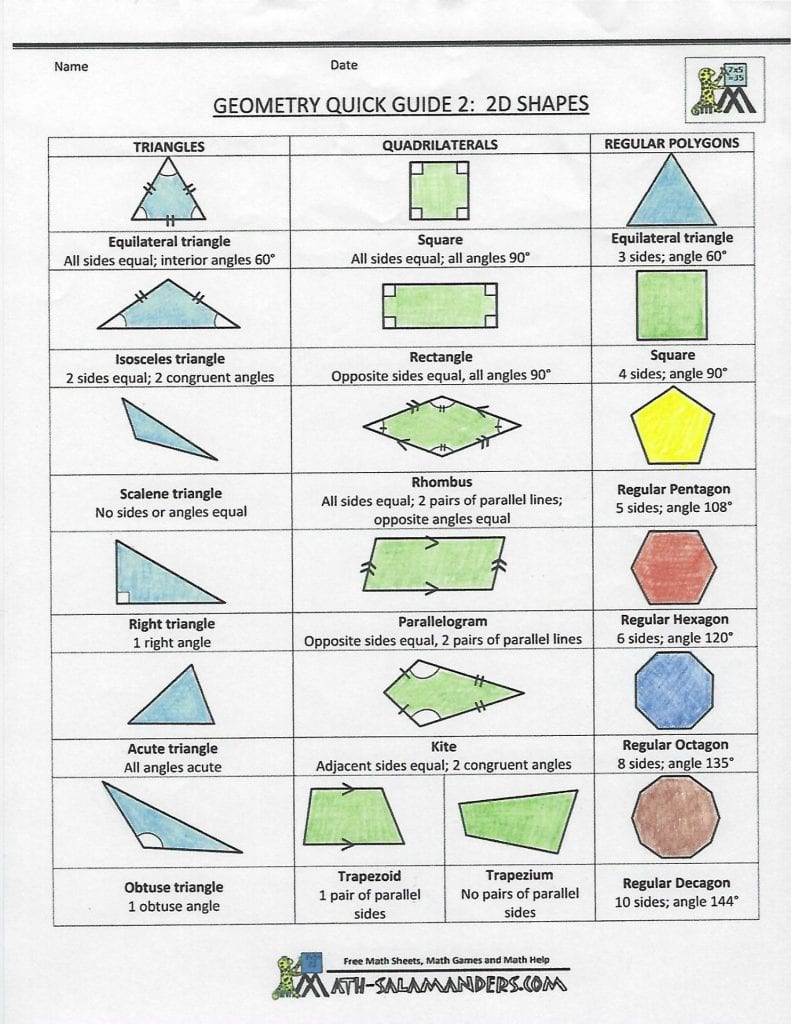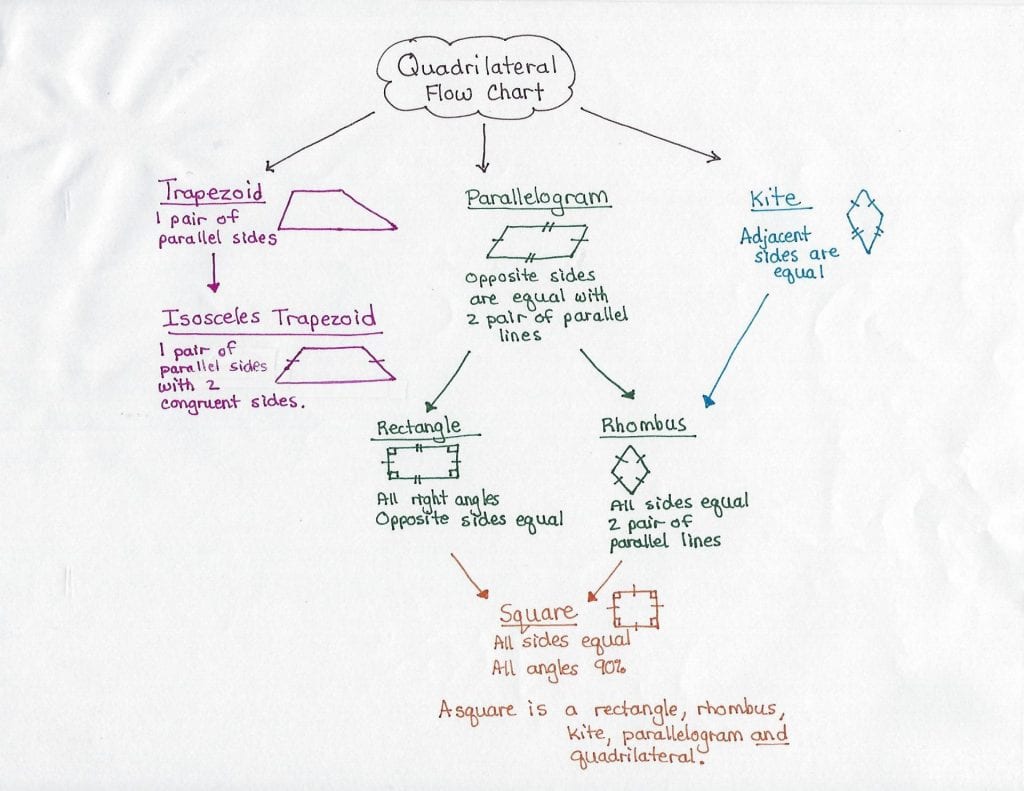by C. Elkins, OK Math and Reading Lady
For many schools, it seems as if Geometry and Measurement standards remain some of the lowest scored. This has always puzzled me because it’s the one area in math that is (or should be) the most hands-on — which is appealing and more motivating to students. Who doesn’t like creating with pattern blocks, making 2 and 3D shapes with various objects, using measurement tools, and getting the chance to leave your seat to explore all the classroom has to offer regarding these standards? So what is it about geometry and measurement that is stumping our students? Here are some of my thoughts – please feel free to comment and add your own:
- Vocabulary? (segment, parallel, trapezoid, perpendicular, volume, area, perimeter, etc.)
- Lack of practical experience? Not all homes have materials or provide opportunities for students to apply their knowledge (like blocks, Legos, measuring cups for cooking, tape measures for building, etc.).
- Background knowledge about the size of actual objects? We take it for granted students know a giraffe is taller than a pickup truck. But if students have not had the chance to go to a zoo, then when they are presented a picture of the two objects they might not really know which is taller / shorter. Think of all of the examples of how we also expect students to know the relative weights of objects. Without background knowledge or experience, this could impede them regarding picture type assessments.
- Standards keep getting pushed to lower grades when students may not have reached the conservation stage? If they think a tall slender container must hold more than a shorter container with a larger diameter, or they think a sphere of clay is less than the same size sphere flattened out, they may have difficulty with many of the geometry and measurement standards.
In this post, I will focus on Geometry. Here is a basic look at the geometry continuum (based on OK Stds.):
KG: Recognize and sort basic 2D shapes (circle, square, rectangle, triangle). This includes composing larger shapes using smaller shapes (with an outline available).
1st: Recognize, compose, and decompose 2D and 3D shapes. The new 2D shapes are hexagon and trapezoid. 3D shapes include cube, cone, cylinder, sphere.
2nd: Analyze attributes of 2D figures. Compose 2D shapes using triangles, squares, hexagons, trapezoids and rhombi. Recognize right angles and those larger or smaller than right angles.
3rd: Sort 3D shapes based on attributes. Build 3D figures using cubes. Classify angles: acute, right, obtuse, straight.
4th: Name, describe, classify and construct polygons and 3D figures. New vocabulary includes points, lines, segments, rays, parallel, perpendicular, quadrilateral, parallelogram, and kite.
5th: Describe, classify, and draw representations of 2D and 3D figures. Vocabulary includes edge, face, and vertices. Specific triangles include equilateral, right, scalene, and isosceles.
Here are a couple of guides that might help you with definitions of the various 2D shapes. The 2D shapes guide is provided FREE here in a PDF courtesy of math-salamander.com. I included a b/w version along with my colored version. The Quadrilateral flow chart I created will help you see that some shapes can have more than one name. Click on the link for a free copy (b/w and color) of the flow chart. Read below for more details about understanding the flow chart.

PLEASE note these very important concepts:
- The definition of a rectangle is often mis-stated. It is not “a shape with 2 long sides and 2 short sides.” It is a shape with 4 right angles in which opposite sides are equal. By this definition, 2nd graders should begin to understand that a square IS a rectangle with one added feature (all of the sides are equal).
- All squares are rectangles (because opposite sides are equal and all angles are 90°), but not all rectangles are squares.
- All squares are rhombi (because all sides are equal and there are 2 pair of parallel lines), but not all rhombi are squares.
- All squares are kites (because adjacent sides are equal), but not all kites are squares.*
- All squares are parallelograms (because opposite sides are equal with 2 pair of parallel lines), but not all parallelograms are squares.
- All rectangles are parallelograms (because opposite sides are equal with 2 pair of parallel lines), but not all parallelograms are rectangles.
- All rhombi are parallelograms (because opposites sides are equal with 2 pair of parallel lines), but not all parallelograms are rhombi.
- All rhombi are kites (because adjacent sides are equal), but not all kites are rhombi.
*Adjacent means the sides share a common vertex. You can see that to recognize the attributes and adequately describe, compare, draw, or construct these shapes, students need to have a very good understanding of types of angles and parallel lines.
Another geometry term that needs to be understood is POLYGON:
A polygon is a closed 2D figures with straight sides. It includes all of the 2D shapes on the above guide (but does not include the circle – because it has curves). If the shape had curves or doesn’t fully connect, then it can’t be called a polygon. A regular polygon is one in which the sides are all the same length and whose angles are all the same. So any 8-sides polygon would be called an octagon, but a regular octagon would have 8 equal sides and angles. Check below for some FREE resources about identifying polygons.
- Polygon poster by Amber R (FREE from TPT): Polygon 1 pg. poster
- Polygon sort by Frogs and Cupcakes (FREE from TPT): Polygon sort
- Polygon (yes or no) worksheet by Norma Saenz (FREE from TPT): Is it a polygon?
- Polygon match by Ms. S-D’s Classroom Creations (FREE from TPT): Polygon match
Next week: I will go more in depth regarding some of the geometry standards above to provide hands-on ideas and help clear up student misconceptions. Enjoy!